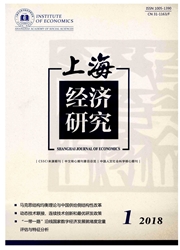

 中文摘要:
中文摘要:
目前收入差距的测量方法都对阶层不平等与阶层划分的描述缺乏敏感性。本文提出了基于模型的潜在分层聚类方法去突破传统测量方法的局限。利用中国2005年1%人口抽样调查数据,对北京、上海、重庆、广州四个特大城市的收入数据进行实证分析。根据模型聚类的结果考察四大城市收入的阶层分布模式、每个阶层的占比,发现四城市间的总体收入不平等差异虽不大,但聚类模型法所得到的这些城市间的收入分层结构却存在着显著差异。最后指出模型聚类的阶层测量方法不是事先选择集群分类的原则或是确定群的数量,它还原了数据的真实性,是对现有收入差距测量方法的一个很好的补充,并对研究社会分层有着更深远的意义。
 英文摘要:
英文摘要:
The current measurement of income gap has a limitation in measuring inequality, that is less sensitive as to how the population is stratified and how individual values differ. The paper proposes a model-based method-latent class/clustering analysis for understanding and measuring class inequality. Using the 2005 National 1% Population Sample Survey, the paper measures the income class inequality of Beijing, Shanghai, Chongqing, Guangzhou, and points out that those four cities have quite different income stratification pattern, although they have similar whole Gini index. It is concluded that Model- Based Clustering is not a pre-seleeted classification and has not a definite number of groups. So it is a good complement to the existing income gap measurement and provide a platform for farther research in social stratification.
 同期刊论文项目
同期刊论文项目
 同项目期刊论文
同项目期刊论文
 期刊信息
期刊信息
